
10 Questions With… Mathieu Lehanneur
When the athletes arrive to light the flame for the Olympic Summer Games in Paris this year, the torch they carry will be one designed by Paris-based designer Mathieu Lehanneur. (He also designed the cauldron—to be revealed during the opening ceremony—in which the flame itself will burn.) The shape—symmetrical both horizontally and vertically—is meant to represent equality, a driving force behind these games. For the first time in history, the opening ceremony will happen outside of a stadium so more people can participate. Leading up to that day, the torch will have traveled across the Atlantic, Indian, and Pacific Oceans, which inspired Lehanneur to make water a prominent component of his design, echoing the aquatic ripples in waves and vibration effects on the base.
Designing such a culturally significant object is not the only recent honor for Lehanneur. He was named the Designer of the Year for 2024 by Maison&Objet, the twice-yearly design show that takes place at the Parc des Expositions on the outskirts of Paris. Among his works displayed earlier this year was an installation of Outonomy, “an ecosystem of life that’s both minimal and optimal,” a representation of man’s domination over nature, a sort of edenic environment far from noise and density of city life, a place for people to rethink the way the live in and react with their environment.
The meeting of the technical, the artistic, and even the poetic are key to Lehanneur’s work. He incorporates technology into projects such as Demain est un autre jour (Tomorrow is another day), which uses GPS to represent the sky at a given location for patients in a hospital palliative care unit, “eluding the course of time by offering everyone the opportunity to see tomorrow’s sky.” He also designed a car for Renault called Suite No4, with a lounge space in its glass-covered backend, illustrating the hunger for escape and the importance of the journey over the destination.
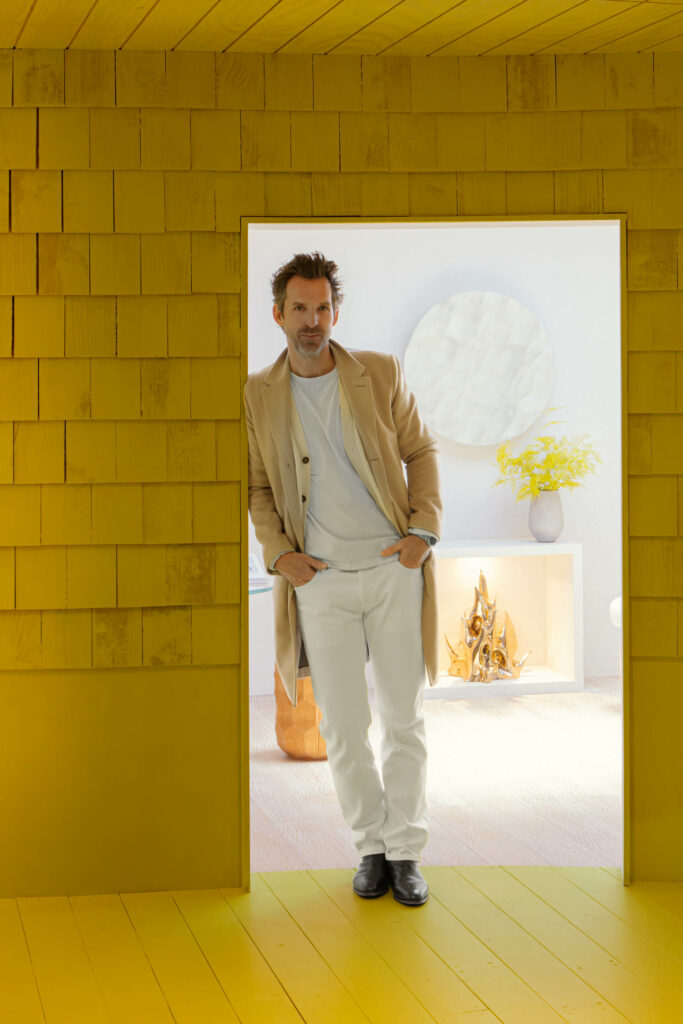
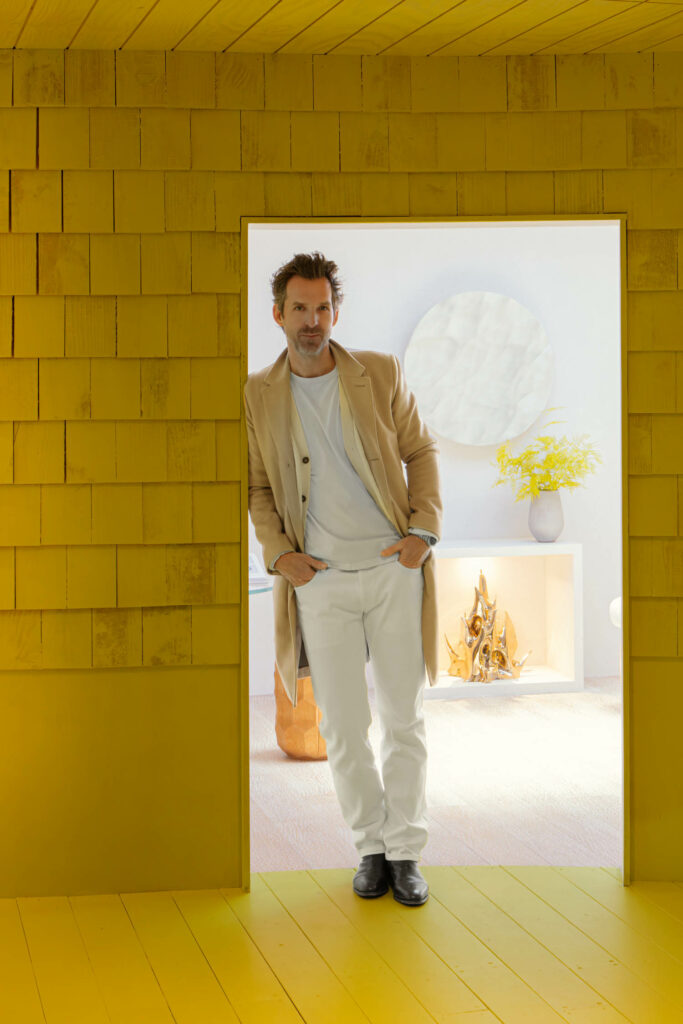
Mathieu Lehanneur Speaks About The Transformative Power of Design

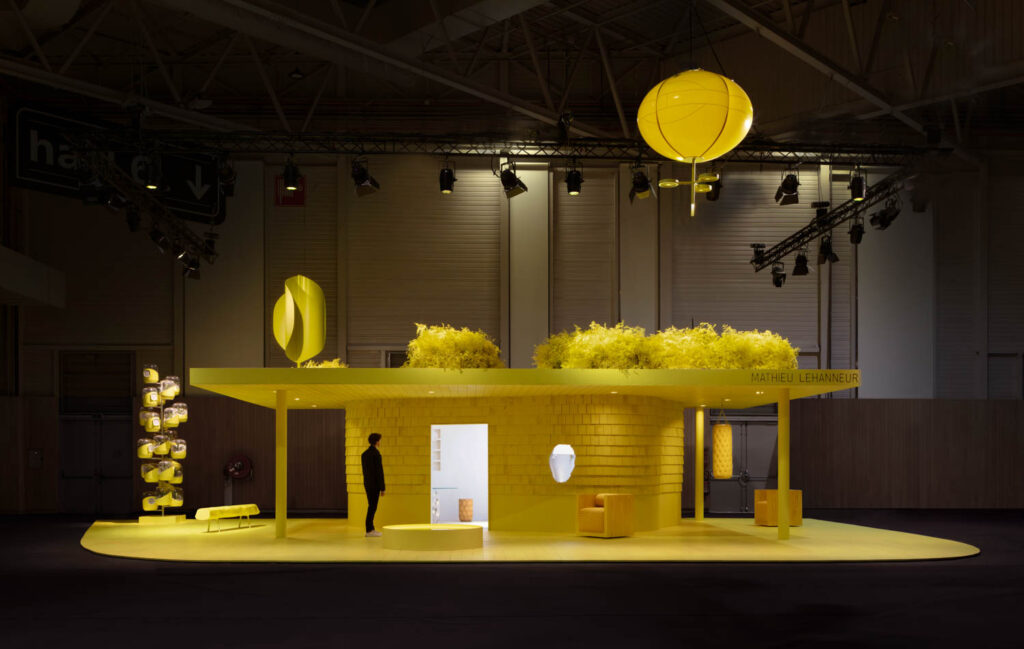
Interior Design: How would you describe your work?
Mathieu Lehanneur: People often associate design with aesthetics, beauty, and harmonious proportions, but that’s not my conception of my work; the main purpose is to create a link between an object and a human being. What really interests me is the capacity of an object to produce, induce, or change behaviors or beliefs. I want my pieces to be living entities; they appear to breathe, sense, and evolve continuously… I want them to be works of art and support for reflection or meditation.
ID: How will your work reflect our post-pandemic times?
ML: During the pandemic, I created “State of the World,” a series of aluminum sculptures whose forms are based on aged pyramids from different countries around the globe. In this particular moment of history, I wanted to embody humanity in its entirety, to be able to crystallize the infinitely large and complex parts of life into objects that we can hold in our hands.
Using population statistics made available by the United Nations, I wanted to capture a “snapshot” of all the human beings living today in over 140 countries. Belonging to a group or a country is a much more intense and permanent feeling than anything else. I think that this project evokes that; it reminds us that everyone is part of a bigger entity. Every human living on this planet is represented here and integrated into one of the pieces. It’s both reassuring and quite vertiginous.
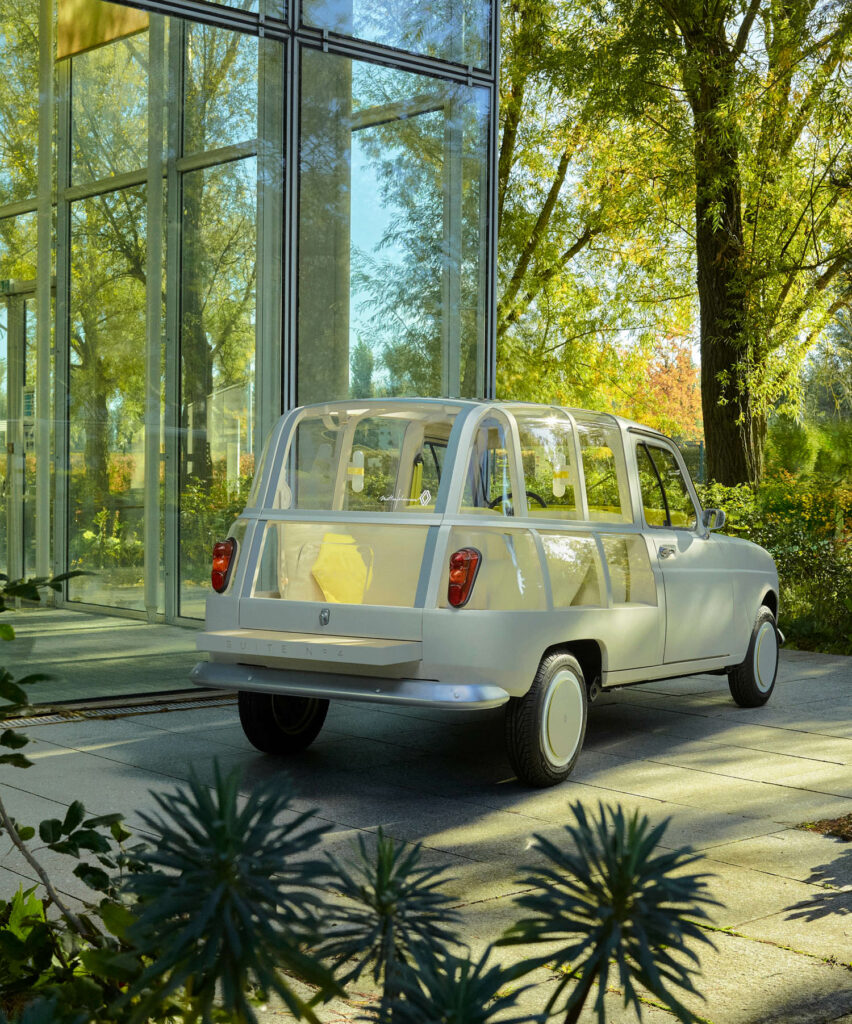
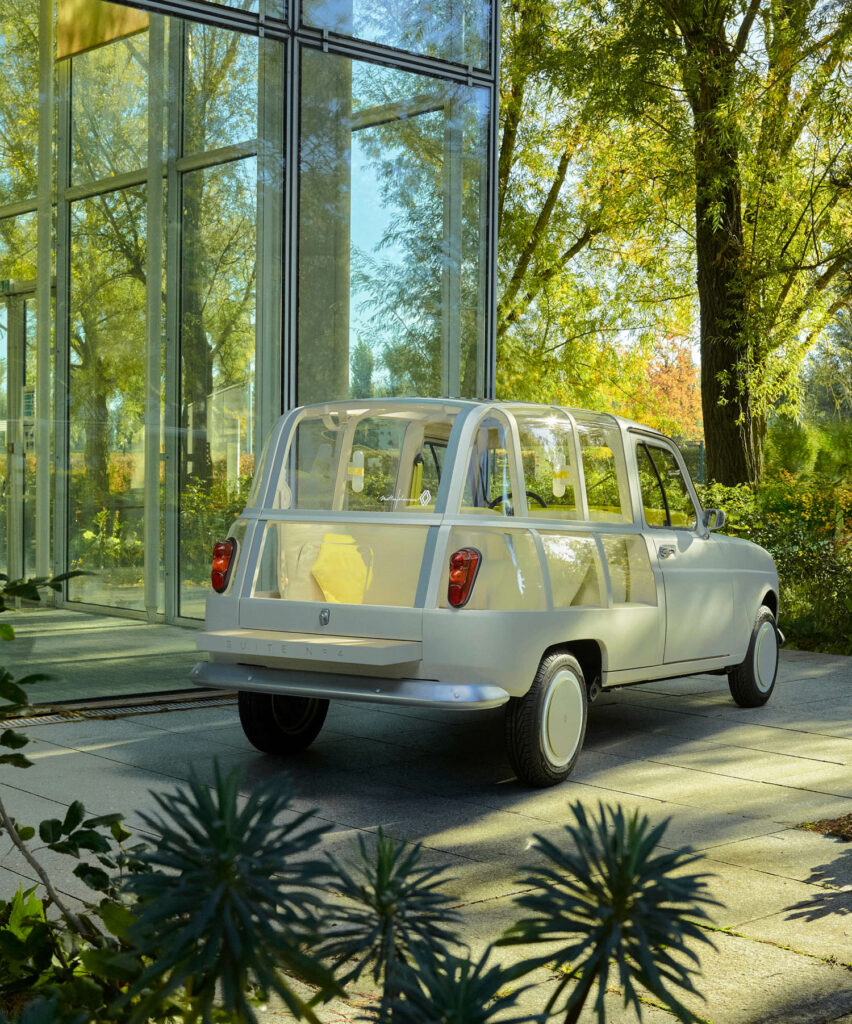
ID: Is there a reason to feel optimistic? If so, how will design reflect and encourage that?
ML: I am convinced that the designer’s challenge is not to design a perfect form, but an object that, as it travels through the user’s “primitive core,” fulfills a function or even solves a problem. When the director of a hospital asks me to work on a project for a palliative care unit, when a country parish priest asks me to create the choir for a Romanesque church, or when I work with Harvard University to develop a domestic air purifier that uses plants to clean up our interiors, I realize how powerful the impact of design can be on life, and how it can transform our lives.
ID: Your work elegantly combines nature and science; how do you think science can help us feel closer to nature?
ML: I like the way science aims to understand human beings in their great complexity. I love how our body alters our psychological states and how our mind affects our physical state. Science, whether it is astrophysical, biological, or medical, is the greatest source of knowledge and a permanent inspiration for my work.

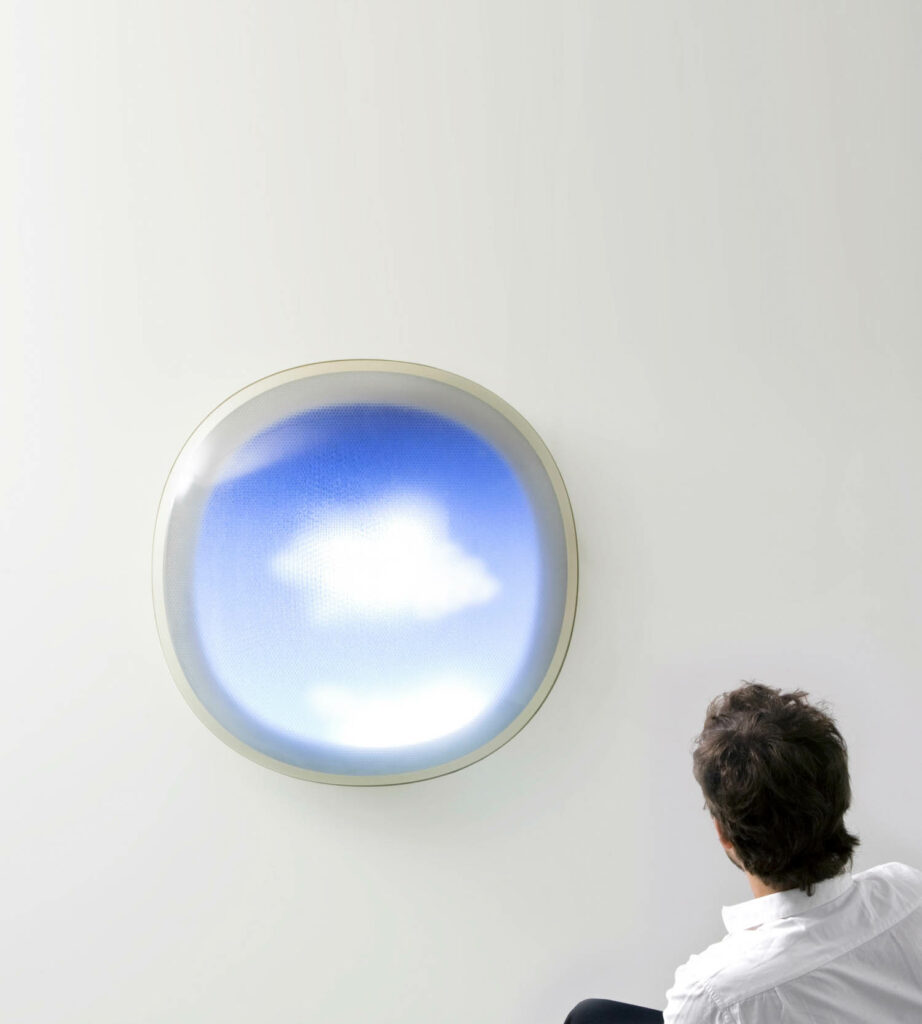
ID: On the same subject, can we talk about Demain est un autre jour (Tomorrow is Another Day), your portal that brings the sky into a hospital room?
ML: The commission was to make a project for a palliative care department in Paris, and the idea was to create an additional window in every single room of the department. But this window is not a normal window; it’s connected to tomorrow and to another location. The idea is that it lets any patient be in contact with the skies and be connected to any location they want to be connected with. Some patients will request the place where their relatives are living, some ask for a place they will never get the chance to visit in their lifetime, and others select the place where they were born.
By using GPS technology—the portal system is connected to the biggest weather forecast worldwide—we can create the sky of tomorrow in every location worldwide. But, at the end, the experience is not a technological experience. It’s a spiritual experience for patients to be able to use the sky and to be connected with something else—whether they believe in a higher being or not.
ID: You have a top-to-bottom approach, covering all aspects of research, development, design, and production. How does that help you achieve the best possible results?
ML: In 2023, we started the Factory in the heart of a century-old industrial building on the outskirts of Paris. This is where we conceive, develop, and sell all our creations. This new location represented a significant milestone in the expansion of the brand we founded in 2018. Over the years, our operation has gradually shifted away from the traditional design studio model, and the factory embodies this paradigm shift. The idea is to establish our practice as a brand, develop and produce everything by ourselves, and remove as many intermediaries as possible.
We decided to manage every single step, milestone and production of the pieces. Sometimes we do outsource some specific elements that we are not able to create in the factory, for example, like blown glass or a big piece of marble. Then, when we receive them, we assemble every component in house. Every single piece we sell is checked in the factory before it gets sent off.
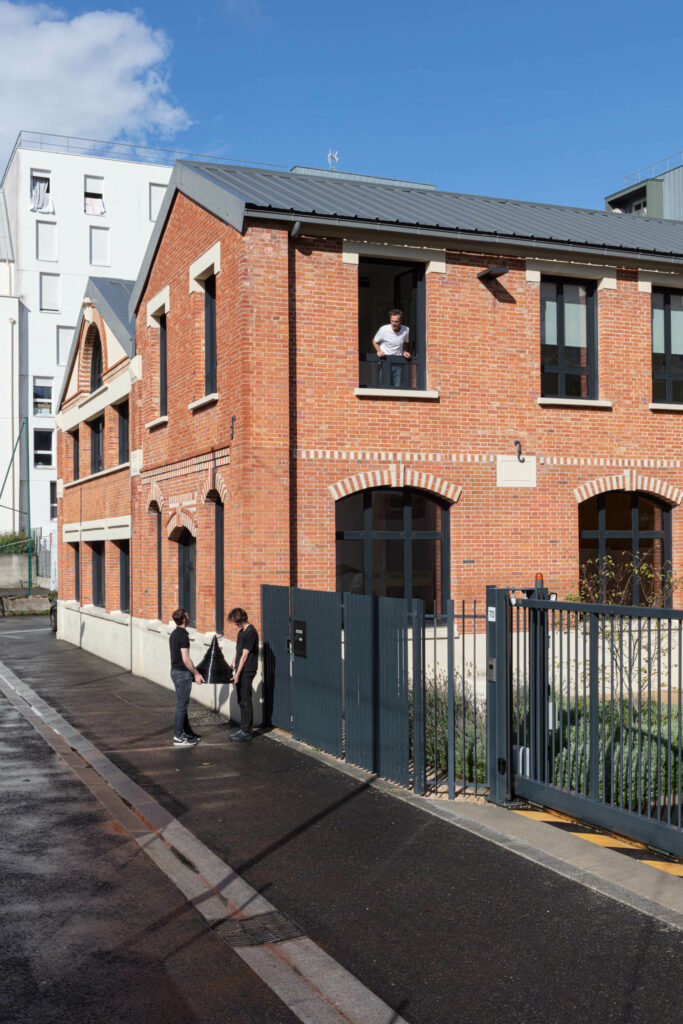
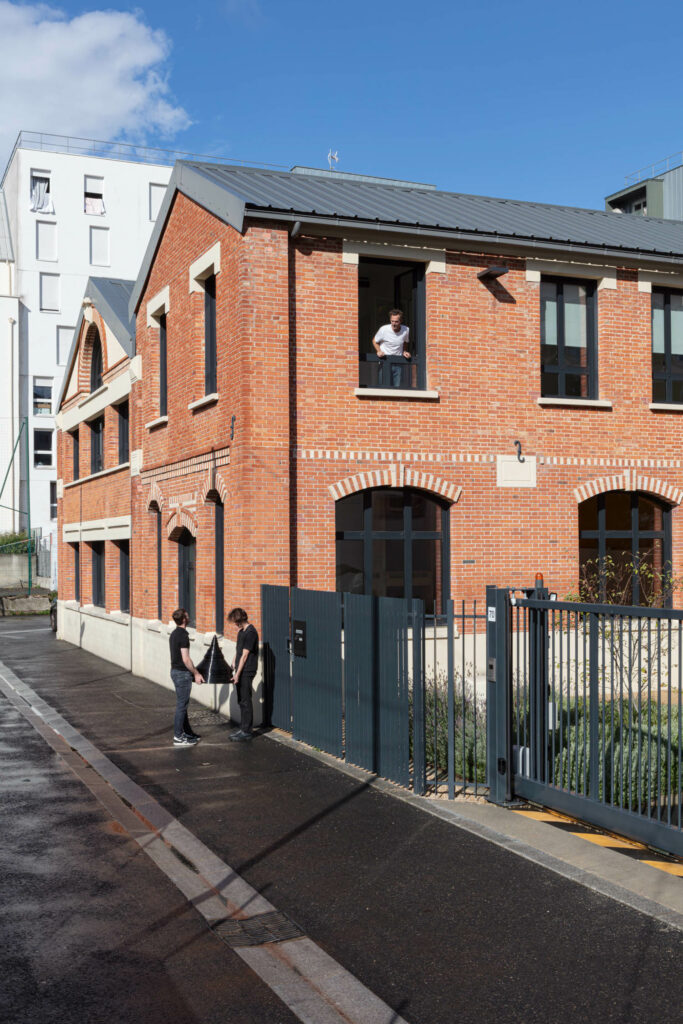
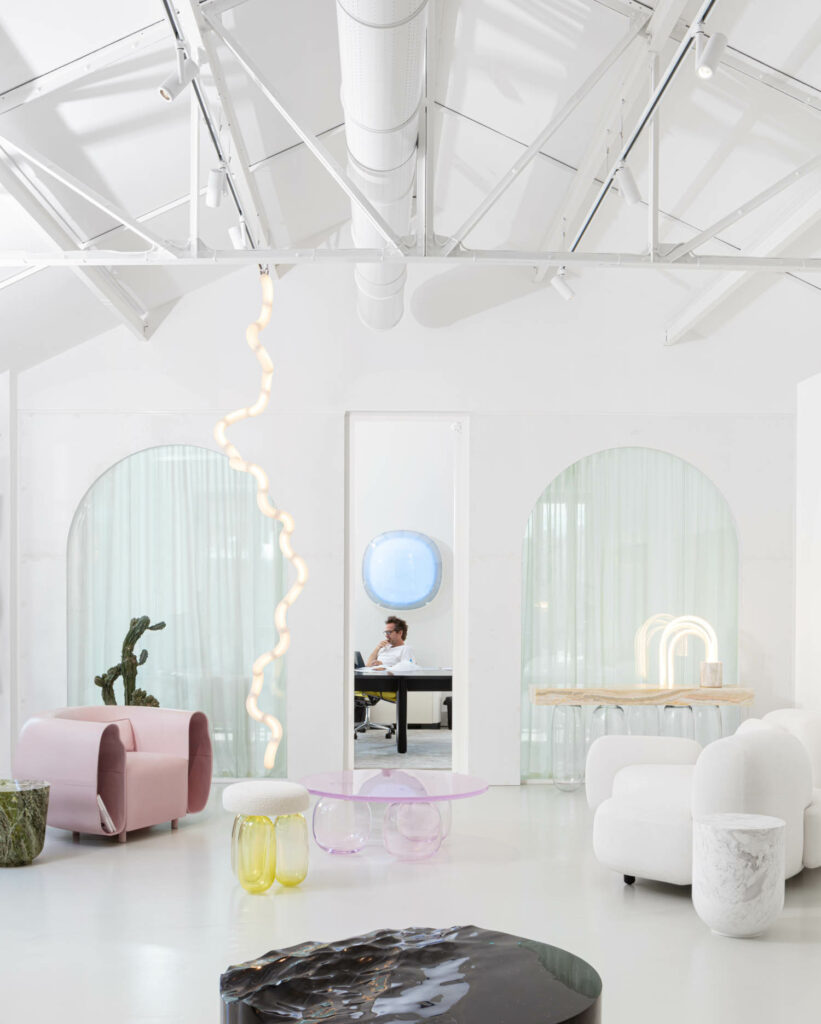
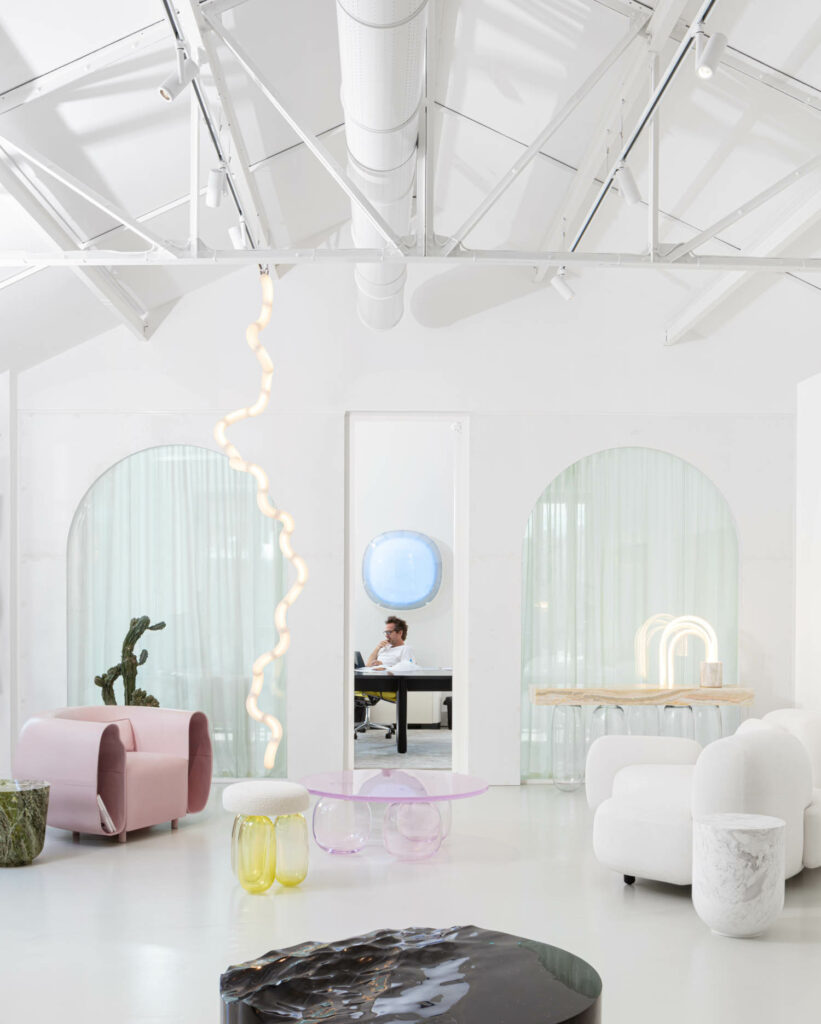
ID: Outonomy, the project you debuted at Maison&Objet, covers so many concepts important to people today (or should be!) such as freedom from noise and the ability to reinvent oneself. What does it mean to you?
ML: The idea is to imagine an innovative habitat and a new lifestyle constructed around a virtuous collaboration between human beings and their environment. It’s more of an installation than a scenographic work. It’s a project about a possible life, a way to ask each visitor the implicit question: “Are you ready?”
We’re standing at a crossroads between the fictional and the documented. This [was] also expressed visually: the entire Outonomy installation [was] monochrome. With its radiant and vibratory yellow, the ensemble of the architecture and objects [were] connected through this solar color.
Outonomy is inspired by the emergence of survivalist notions that are currently appearing in numerous ways around the globe, from the mild to the highly paranoid. The idea here is not to go down the road of building bunkers or contemplating the apocalypse, but rather to question the life that we wish to lead.
It is not a fully complete project, nor it is a turnkey project. For me, it is a seed and an idea, and I created Outonomy to get feedback from the visitors of Maison&Objet. It was not me bringing something and saying, “Okay, it’s ready for sale, do you want it?” It was more of an open platform. And this idea of a seed… it might be a definition of my work. It means that, by myself, I’m not able to change anything. I need other people to take part in it.
ID: In the Olympic torch and a lot of your other pieces, the idea is a key element. Can you speak to that?
ML: There are two main reasons. The first one is that, as human beings, we are mainly made of water. Your body and mind are full of water. And the water and sea and ocean—this is our primitive base. We come from water and we are full of water. The second thing is that, when I was kid on holiday, I spent a lot of time in front of the ocean, and I was thinking—and I still do that—that this is one of the very rare moments that you feel like you are at the right place at the right moment. This is, for me, one of the rare moments that you feel alive. You feel that, “Wow, I am in front of something definitely bigger than me that was existing before me, that will exist after me”—and it’s kind of a superhuman but spiritual, contemplative experience.
Since this moment, I wanted to check to see if I would be able to recreate this type of feeling when I’m far away from the sea and the ocean. And, of course in front of the ocean, the waves are moving continuously. In the marble of the torch, it’s fully static but thanks to the refractions of the polished marble, you feel the movement.


ID: Why did you decide to make your New York showroom an apartment, rather than a studio or a store?
ML: The idea was to welcome our clients and collectors—not in a gallery-like space but more like in an amazing home where we’ve designed every single piece and where every visitor can take their time to drink a coffee and have a seat on the couches. It’s for them to see all the pieces in tune together.
ID: In Outonomy and Renault Suite No4, it seems like you’re dealing with the idea of escape. Is that the case?
ML: Absolutely. I fully agree with you. And, frankly, I was thinking of that just after completing Outonomy. Also, this is the last chapter from Suite No4 because this version talks about movements, escaping, and bringing the bare minimum with you. It also talks about a potential new way of living. Even in Suite No4, I brought in some yellow touches. Yellow, for me, is one of the colors of escape. Yellow is interesting because, in one way, it talks about the sun, about energy and about radiancy. On the other side, yellow symbolizes something that might turn bad. In a sci-fi movie, when the sky becomes yellow, it’s never a good sign. My idea for Suite No4 and for Outonomy is always to play on this perception of the life you want to live and the potential toxicity of this world.



read more
DesignWire
Inside David Lynch’s Dark and Moody Exhibit at Salone del Mobile
Explore David Lynch’s buzzy exhibition at Salone del Mobile.Milano, which features elements that nod to his films, in this account by architect Alexander Gorlin.
DesignWire
Row Over to UPenn’s Updated Historic Boathouse
University of Pennsylvania tapped EwingCole to modernize and expand its existing varsity crew facility, located in an 1875 stone boathouse in Philadelphia.
DesignWire
How Clay Makes a Big Impact in This Vancouver Office
M Moser Associates plus TAV Ceramics equals abacus-inspired installations for the Vancouver, Canada, office of accounting-software company Tipalti.





